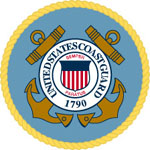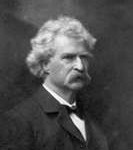Whether anguishing over American military interventions abroad or delivering jabs at Wall Street tycoons, this Twain is strikingly contemporary. Though the autobiography also contains its share of homespun tales, some of its observations about American life are so acerbic — at one point Twain refers to American soldiers as “uniformed assassins” — that his heirs and editors, as well as the writer himself, feared they would damage his reputation if not withheld.
“From the first, second, third and fourth editions all sound and sane expressions of opinion must be left out,” Twain instructed them in 1906. “There may be a market for that kind of wares a century from now. There is no hurry. Wait and see.”
Twain’s decree will be put to the test when the University of California Press publishes the first of three volumes of the 500,000-word “Autobiography of Mark Twain” in November. Twain dictated most of it to a stenographer in the four years before his death at 74 on April 21, 1910. He argued that speaking his recollections and opinions, rather than writing them down, allowed him to adopt a more natural, colloquial and frank tone, and Twain scholars who have seen the manuscript agree.
In popular culture today, Twain is “Colonel Sanders without the chicken, the avuncular man who told stories,” Ron Powers, the author of “Mark Twain: A Life,” said in a phone interview. “He’s been scrubbed and sanitized, and his passion has been kind of forgotten in all these long decades. But here he is talking to us, without any filtering at all, and what comes through that we have lost is precisely this fierce, unceasing passion.”
Next week the British literary magazine Granta will publish an excerpt from the autobiography, called “The Farm.” In it Twain recalls childhood visits to his uncle’s Missouri farm, reflects on slavery and the slave who served as the model for Jim in “Huckleberry Finn,” and offers an almost Proustian meditation on memory and remembrance, with watermelon and maple sap in place of Proust’s madeleine.
“I can see the farm yet, with perfect clearness,” he writes. “I can see all its belongings, all its details.” Of slavery, he notes that “color and condition interposed a subtle line” between him and his black playmates, but confesses: “In my schoolboy days, I had no aversion to slavery. I was not aware there was anything wrong about it.”
Versions of the autobiography have been published before, in 1924, 1940 and 1959. But the original editor, Albert Bigelow Paine, was a stickler for propriety, cutting entire sections he thought offensive; his successors imposed a chronological cradle-to-grave narrative that Twain had specifically rejected, altered his distinctive punctuation, struck additional material they considered uninteresting and generally bowed to the desire of Twain’s daughter Clara, who died in 1962, to protect her father’s image.
“Paine was a Victorian editor,” said Robert Hirst, curator and general editor of the Mark Twain Papers and Project at the Bancroft Library at the University of California, Berkeley, where Twain’s papers are housed. “He has an exaggerated sense of how dangerous some of Twain’s statements are going to be, which can extend to anything: politics, sexuality, the Bible, anything that’s just a little too radical. This goes on for a good long time, a protective attitude that is very harmful.”
Twain’s opposition to incipient imperialism and American military intervention in Cuba and the Philippines, for example, were well known even in his own time. But the uncensored autobiography makes it clear that those feelings ran very deep and includes remarks that, if made today in the context of Iraq or Afghanistan, would probably lead the right wing to question the patriotism of this most American of American writers.
In a passage removed by Paine, Twain excoriates “the iniquitous Cuban-Spanish War” and Gen. Leonard Wood’s “mephitic record” as governor general in Havana. In writing about an attack on a tribal group in the Philippines, Twain refers to American troops as “our uniformed assassins” and describes their killing of “six hundred helpless and weaponless savages” as “a long and happy picnic with nothing to do but sit in comfort and fire the Golden Rule into those people down there and imagine letters to write home to the admiring families, and pile glory upon glory.”
He is similarly unsparing about the plutocrats and Wall Street luminaries of his day, who he argued had destroyed the innate generosity of Americans and replaced it with greed and selfishness. “The world believes that the elder Rockefeller is worth a billion dollars,” Twain observes. “He pays taxes on two million and a half.”
Justin Kaplan, author of “Mr. Clemens and Mark Twain: A Biography,” said in a telephone interview: “One thing that gets Mark Twain going is his rage and resentment. There are a number of passages where he wants to get even, to settle scores with people whom he really despises. He loved invective.”
The material in Volume 1 that was omitted from previous editions amounts to “maybe as little as 5 percent of the dictations,” said Harriet E. Smith, chief editor of the autobiography. “But there will be a much higher percentage in Volumes 2 and 3,” each expected to be about 600 pages.
By the time all three volumes are available, Mr. Hirst said, “about half will not have ever been in print before.” A digital online edition is also planned, Ms. Smith said, ideally to coincide with publication of Volume 1 of “the complete and authoritative edition,” as the work is being called.
Some of Twain’s most critical remarks about individuals are directed at names that have faded from history. He complains about his lawyer, his publisher, the inventor of a failed typesetting machine who he feels fleeced him, and is especially hard on a countess who owns the villa in which he lived with his family in Florence, Italy, in 1904. He describes her as “excitable, malicious, malignant, vengeful, unforgiving, selfish, stingy, avaricious, coarse, vulgar, profane, obscene, a furious blusterer on the outside and at heart a coward.”
About literary figures of his time, however, Twain has relatively little to say. He dislikes Bret Harte, whom he dismisses as “always bright but never brilliant”; offers a sad portrait of an aged and infirm Harriet Beecher Stowe; and lavishly praises his friend William Dean Howells. He reserved criticism of novelists whose work he disliked (Henry James, George Eliot) for his letters.
Critics, though, are another story. “I believe that the trade of critic, in literature, music, and the drama, is the most degraded of all trades, and that it has no real value,” Twain writes. “However, let it go,” he adds. “It is the will of God that we must have critics, and missionaries, and Congressmen, and humorists, and we must bear the burden.”
As aggrieved as he sometimes appears in the autobiography, the reliable funnyman is in evidence too. Twain recalls being invited to an official White House dinner and being warned by his wife, Olivia, who stayed at home, not to wear his winter galoshes. At the White House, he sought out the first lady, Frances Cleveland, and got her to sign a card on which was written “He didn’t.”
Mr. Hirst said: “I’ve read this manuscript a million times, and it still makes me laugh. This is a guy who made literature out of talk, and the autobiography is the culmination, the pinnacle of that impulse.”
 After viewing the following photographs you will never look at “eyes” in the same manner. The photographer, Suren Manvelyan, has looked through his viewfinder at the human eye and captured it in a way that we have never seen before. We hope that you are as captivated by his work as we are. We wish to thank “Reader B6” for sharing this outstanding photographic report. ~ Editor
After viewing the following photographs you will never look at “eyes” in the same manner. The photographer, Suren Manvelyan, has looked through his viewfinder at the human eye and captured it in a way that we have never seen before. We hope that you are as captivated by his work as we are. We wish to thank “Reader B6” for sharing this outstanding photographic report. ~ Editor  field of Quantum Chaos. In 2002 he received The President of the Republic of Armenia’s Award for his investigations in the field of Quantum Technologies. He is a scientific researcher at the Institute for Physical Research of National Academy of Sciences since 1997.
field of Quantum Chaos. In 2002 he received The President of the Republic of Armenia’s Award for his investigations in the field of Quantum Technologies. He is a scientific researcher at the Institute for Physical Research of National Academy of Sciences since 1997.















